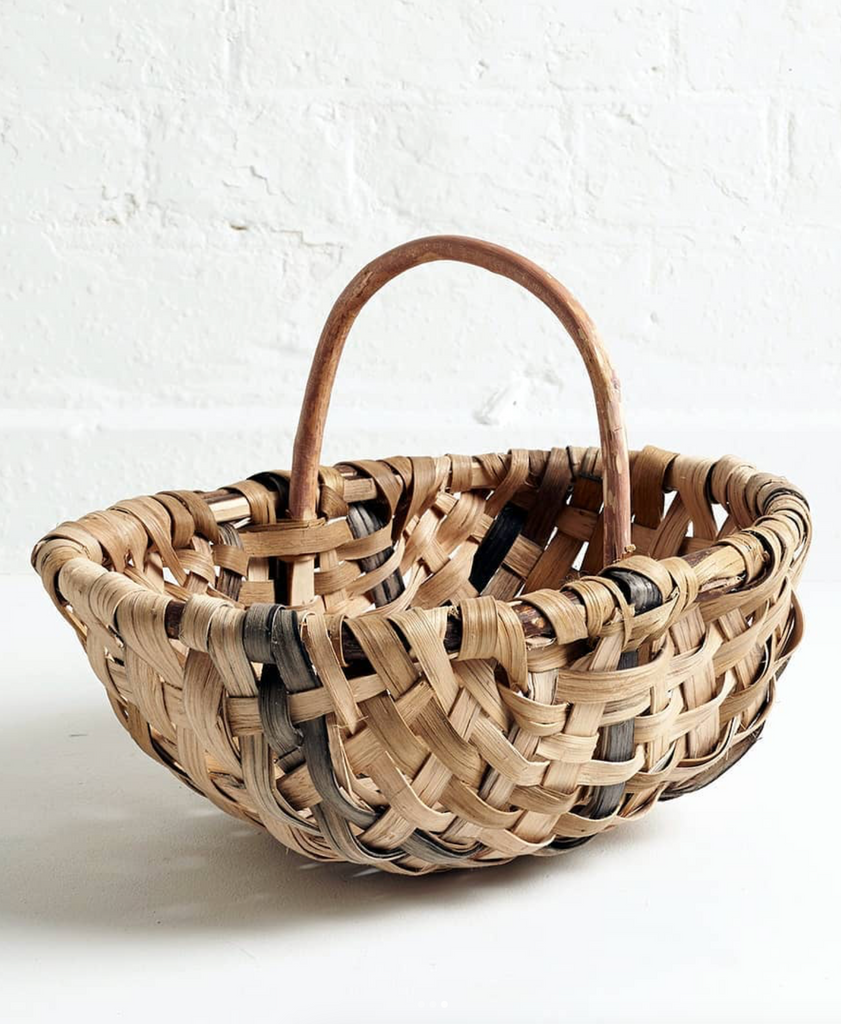If you made it over to Somerset House during the London Design Biennale earlier this summer, you undoubtedly saw the ceramic-like objects designed and 3D printed by a human-looking robot called Ai-Da. Expectations were high but as it turns out, the objects were flawed and rather unsightly. That’s because the goal of the exhibition was to highlight the potential contributions, and pitfalls, of artificial intelligence in creative industries. Putting all the sci-fi fanfare aside, it seems like a good time to draw our focus back to the importance of the human hand.

Machines taking the craft out of objects is nothing new, of course. Consider the industrial revolution or the drop in demand for handmade domestic goods when cheaper plastic alternatives flooded markets after WWII. Handwoven baskets are a classic example. There are currently five forms of basket weaving flagged as ‘critically endangered’ on the Heritage Crafts’ Red List of Endangered Crafts. These are crafts “at serious risk of no longer being practised in the UK. They may include crafts with a shrinking base of craftspeople, crafts with limited training opportunities, crafts with low financial viability, or crafts where there is no mechanism to pass on the skills and knowledge.” Among those in danger are swill and hazel basket making—the latter added to the list just two years ago. People keeping these crafts alive, and handing down their skills to the next generation, are key to preventing them from going the way of the cricket ball—which is no longer made in the UK.
Lorna Singleton is one such maker. Based in the Lake District, she manages a woodland, harvests her own hazel and oak, and makes baskets, centre, known as swills, swales, spelks and spales—all different ways of saying “split wood” depending on the regional dialect. She first learned basket making from Owen Jones, who learned from one of the last surviving swillers before that plastic-induced midcentury bust. A fact that is not lost on Singleton. “I really love making them functional, especially products that replace plastic or metal materials,” she says. “It’s nice to have that element of nature in people’s houses.”
Indeed, nothing adds a bit of softness to the typically hard surfaces of a kitchen or bathroom quite like the tone and texture of a handwoven basket. “Wood is such a warm material. Oak gets a range from honey-coloured and pale oak colour all the way through to silvery and black pieces—the process of making the baskets turns the wood black. Whereas hazel is quite a pale creamy colour, unless it still has the bark on, then it has more variation,” she says.
A collection perched on top of cabinetry or hanging from a pot rack looks timeless, but handwoven baskets are strong. They are meant to be used and to wear well and to be handed down. This is true even of the most expensive work, including that of celebrated artisan Annemarie O’Sullivan. Perhaps the most well-known contemporary basket weaver in the UK, her functional objects include trays, and pottle and market baskets adorned with leather straps, all made from willow she grows and harvests on her land in East Sussex. Like Lorna, her love for the craft was ignited after attending a one-day course in basketry. That was followed by an apprenticeship program which, it turns out, is a crucial part of learning this craft. Watch a video documenting her process and you’ll see what a labour of love it is and why they are worth every Pound.
The same goes for Felicity Irons, the maker behind Rush Matters. Harvesting for her involves taking a punt out on the rivers Ouse and Ivel in Bedfordshire and Nene in Northamptonshire and using a scythe to cut back the English Bulrush. Once dried, it's woven, plaited and stitched into all sorts of baskets (and even floor matting, like this recent installation at Castle Howard, commissioned by designer Remy Renzullo). Rows of Irons’ larger baskets would tuck nicely under a kitchen island or used in a laundry room—some come lined with a lovely check fabric to catch crumbs or prevent snagging.
All of these artisans host workshops to pass their knowledge along, or check out the Basket Makers Association for other courses near you. And consider yourself warned—just watching a video might inspire you to take up the craft, as was the case for Deborah Needleman. The former editor-in-chief of The New York Times’ T: Style Magazine, Needleman was so captivated by a video of O’Sullivan’s process she eventually left her post to pursue the craft full time. Do watch Cabana Magazine’s interview with her here.
Should you want to support this heritage craft but perhaps not carry-on the legacy of making baskets yourself, regularly check for new inventory drops on these artisans’ websites or just get in touch about a commission. Most collaborate with designers and private clients on baskets of course but also screens, furniture, and more.
Photos © Ben Pentreath; Lorna Singleton; Isabel Lopez Quesada

